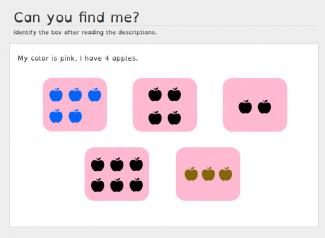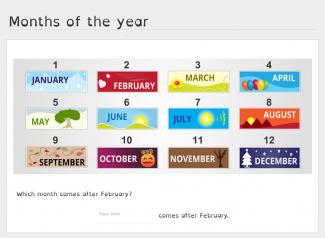Dyscalculia
Dyscalculia simply means learning disability in maths. There hasn’t been as much research conducted in Dyscalculia as in other learning disabilities. It is an even more complex learning difficulty than dyslexia.
Definition
Dyscalculia is defined as a specific mathematical learning disorder, where the level of mathematical ability is far below than that expected of a person’s age, intelligence, and education. People with dyscalculia have problems with basic arithmetic facts and recognising letters and symbols.
The Department of Education, UK defines dyscalculia as under:
’Dyscalculia is a condition that affects the ability to acquire arithmetical skills. Dyscalculic learners may have difficulty understanding simple number concepts, lack an intuitive grasp of numbers, and have problems learning number facts and procedures. Even if they produce a correct answer or use a correct method, they may do so mechanically and without confidence.’
Symptoms
Children with dyscalculia have difficulties with many aspects of mathematics. Some of the common difficulties they experience are listed below. A child may not have all the difficulties mentioned here.
-
Difficulty in doing mental arithmetic.
-
Difficulties in adding, subtracting, multiplying and division.
-
Difficulty to learn counting.
-
Shows difficulty in understanding fractions.
- Difficulty in solving word problems- difficulty with language.
-
Difficulty in comparing numbers (Which of the two numbers is larger).
-
Difficulty in understanding quantity.
-
Difficulty with time (days,week) and directions (left, right). Cannot tell time accurately.
-
Difficulty in keeping track of time tables.
-
Exhibits difficulties in understanding concepts like place value, interests, discount etc.
-
Confusion of mathematical symbols ('+' instead of 'x').
- Difficulty with problems involving multi-step operations.
-
Difficulties in find out sequence in numbers.
-
Need support for counting forwards and backwards.
Prevalence of Dyscalculia
Dyscalculia is as widespread as dyslexia. Many children with dyslexia also have difficulties with arithmetic. An estimated 6% of children may have dyscalculia.
There hasn’t been much research conducted to show the number of children or adults having dyscalculia. Overall the research shown that difficulties in math are as common as those of reading. An estimated 6 percent of children may have dyscalculia. It isn’t widely discussed and is far less understood than dyslexia.
General Strategies for Learning and Teaching
- Specialized instruction: Provide specialized instruction either one-on-one or in a small group.
-
Multisensory approach: Children with dyscalculia learn in a different way and so a multi-sensory approach helps them to make the learning easier. In a multisensory approach, the students can engage in all the learning modalities – visual, auditory and kinesthetic-tactile – to compensate for any difficulties. Through engaging the senses, knowledge becomes secure and its aids retention and retrieval.
-
Connect math to real life: Connecting math to real life helps the children to make connections between what they had learnt in classroom and the problems in front of them. This helps the children to understand the concepts and learn much faster.
-
Playing Mathematical Games: Playing mathematical games are much more interesting than pencil and paper work. Teachers or parents have to choose the games that help to build the skills the child needs most. Today, lots of different formats of games are available, like mobile apps, computer games, board games etc.
-
Counting with fingers: Use portable strategies like counting with fingers and math tricks using fingers. Children with math problem can use finger-based representations to learn basic numerical and arithmetic principles.
-
Use assistive technology: Assistive technology can provide remedial and compensatory support for the children with learning disability. Different tools and applications are available to help people with math problems. Teachers or parents have to choose the tools that help to build the skills the child needs most.
General tips for Teachers
-
Concepts need to be broken down into smaller manageable chunks.
-
Give extra time to complete the task. Also give extra time on tests.
-
Teacher can plan different activities to teach the concepts so students are able to explore concepts.
-
Let them master one concept before introducing a new concept.
-
Highlighting key words and numbers in word problems.
-
Read questions for the student.
What can Parents do?
- The parent should first understand their child. They should have a good idea of their child’s weak and strong areas. Strengthen their strong areas and work on the areas of weaknesses.
- Learn more about remedial measures and use these while coaching their child.
-
Breakdown homework into smaller chunks.
-
Use small objects, such as cereals, beads to solve simple math problems.
-
Focus on games and activities.
-
Give real money to play shopping.
- Wherever possible, draw pictures and diagrams to explain the word problems.
- Make them aware of patterns in maths.
- Make a list of keywords in word problems and teach the child the significance of these words/terms.
-
Talk to the teacher and learn how the child is doing at school.


